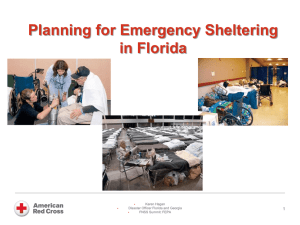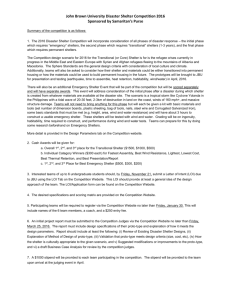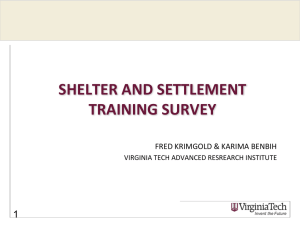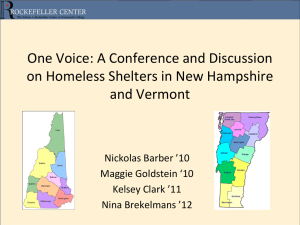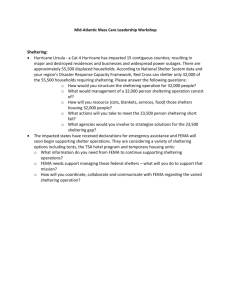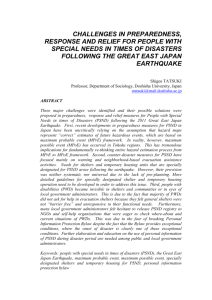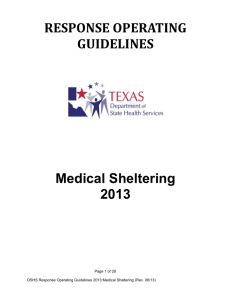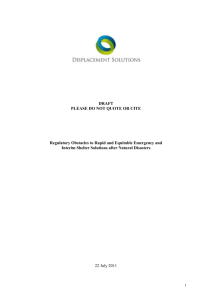Emergency Sheltering by the American Red Cross
advertisement
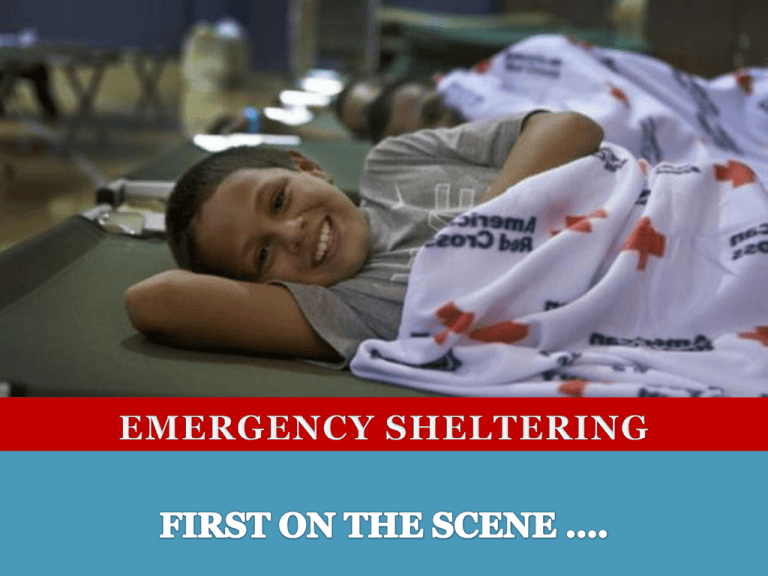
Sheltering • To provide safe and secure environment for persons displaced due to a disaster. • May be short or long term. • Part of the initial response to a disaster. American Red Cross’s Role in Sheltering • Co-lead of ESF-6, Mass Care Sheltering, with FEMA. FEMA/ARC MOA • ARC has MOU’s with many cities, school districts, vendors, partner organizations. Both nationally, and locally. • Works with other organizations to provide for emergency sheltering needs (i.e. Salvation Army, Southern Baptist Convention, Disaster Children’s Services, etc.) American Red Cross’s Role in Sheltering • Coordinates closely with local government first responders (i.e. Fire and Law Enforcement, etc.). • Local Red Cross chapters provide mutual aid to each other during larger disasters. •National Red Cross also supports chapters during major disasters. Disaster Operations Center (DOC) National Shelter System (NSS) • National database of emergency shelter locations. • Includes site-specific information on each shelter location. • This is the official Red Cross Shelter Information for all Active shelters. Basic Shelter/Mass Care Terminology • Shelters • Evacuation Centers • Warming/Cooling Centers • Charging Centers Shelters • A “Shelter” is safe place for people affected by a disaster to stay after being evacuated from their homes. • Shelters provide overnight lodging, meals, etc. • Provide shelter to all members of the evacuated community, including persons with Access and Functional Needs. •Usually opened in a school or city government site. Shelters • Include the following support functions, besides lodging: • Disaster Health Services • Medication replacement, when applicable • Support basic medical needs • Disaster Mental Health Services • Communications • Can provide emergency communications Feeding • In shelters: • Provide 3 meals per day • Strive to offer culturally diverse meals whenever possible. • In shelters and Evacuation Centers: • Provide snacks and fluids “Evacuation Centers” • An “Evacuation Center” is similar to a “Shelter”. • It provides a temporary safe location for evacuees to stay while an immediate threat is mitigated. • Usually opened for a matter of hours, and not overnight. • Can accommodate more people than shelter. Other Centers • Warming/Cooling Centers • Not a Red Cross shelter, but may be supported by the Red Cross. • Usually part of a local government’s “Extreme Weather” plan. • Provides immediate warmth or cooling for people when temperatures reach a certain trigger point, for a certain length of time. Other Centers • Charging Centers • Possible future type of center. • Issue came from the recent widespread windstorms/power outages. • New media and smartphone usage. • Not a Red Cross shelter, but may be supported by the Red Cross. Safe and Well • Allows Shelter clients to leave a message for loved ones. • Use www.redcross.org “ERV’s” • ERV’s are multi-use vehicles that are used for mobile feeding primarily. • They can give out thousands of meals a day. • Meals are prepared at another site (i.e. local vendor, mobile disaster kitchen, etc.). Loaded in Cambros for delivery. • The ERV’s pick up the food and deliver it to where the clients are located (Shelter, disaster site, etc.) “Training” • Standardized training offered to all Red Cross volunteers in Shelter Operations, Mobile Feeding, etc., nationwide. • Ready When the Time Comes – Offers shelter operations training to corporate employees. They act as a force-multiplier during a major disaster. • Partner Training- Red Cross trains government employees to be shelter workers during a major disaster. “Disaster Dispatch” • 24 Hour System that dispatches Red Cross resources, nationwide. • One 24-hour emergency contact phone number: 855 891-7325 Questions? Ian Whyte Emergency Services Officer/COO Greater Long Beach/Rio Hondo Chapters American Red Cross Ian.Whyte@redcross.org




